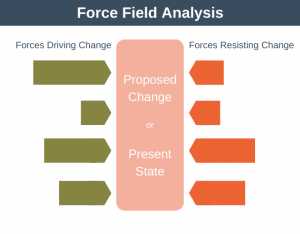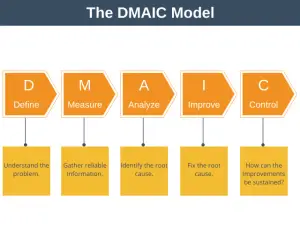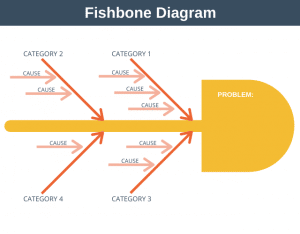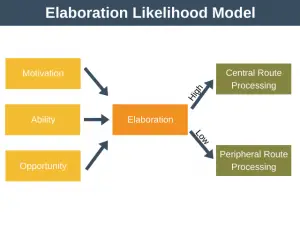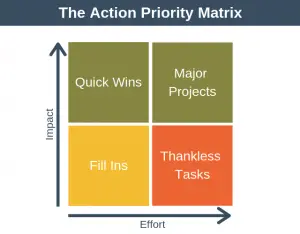The OODA loop, also known as Boyd’s Cycle, is a decision-making tool, originally developed to help fighter pilots win during air combat even though they may possess incomplete data.
Behind the OODA loop is the philosophy that reacting more quickly to changing circumstances than your competition puts you at a competitive advantage, and thus you win.
It is just as applicable to business as it is to air combat. In these two environments, you may never have perfect and complete data. OODA is a loop, meaning you can change your course of action as more data becomes available.
The OODA loop process was developed by military strategist John Boyd and stands for Observe, Orient, Decide, and Act.
OODA’s original goal was to help you make decisions so quickly that you interrupt your enemies’ decision cycle. In a nutshell, it’s a technique for winning head-to-head contests.
Who is John Boyd?
John Boyd was a military strategist and United States Air Force fighter pilot and Colonel who designed the OODA loop during the Korean War as a way for fighter pilots to win during air-to-air combat.
The underlying principle behind the loop was that the pilot who can cycle through the loop the fastest will win because their opposition will still be responding to a situation that has already changed.
An interesting thing to note about John Boyd and the OODA loop is that he never wrote down or published his theories. Instead, his ideas are within a mammoth slide presentation titled Discourse on Winning and Losing and an essay titled Distruction & Creation (1976).
The OODA Loop
In the image below you can see a simplified version of the OODA loop:

The aim of using the OODA loop is to filter the available information, putting it in quickly into context and making the most appropriate decision based on what you know about a situation.
If you can progress through the OODA loop faster than your competitor, then by the time your competitor has reacted to this data change, you’ve already moved on and cycled through the OODA loop more times. Thus, they are responding to out-of-date information, which makes their next step a misstep. As your competition begins to realize they are being outmaneuvered at every turn, they will become confused and panic. At this point, it becomes clear to your opponent that they will lose, which in turn breaks their willingness to fight.
While you’re progressing through the loop, the situation may be changing, or new information may come to light. Because of this, it may be necessary to cancel your planned action at any time to interpret the latest information.
Before we look at an example, let’s take a closer look at the key steps of the OODA Loop.
1. Observe
The observation phase is about gathering information or data. In this step, you’re trying to understand what’s changing in both in the internal and external environment.
In practice, this means understanding your own data, your competitor’s strategy and moves, and broader trends within your industry and society as a whole.
The critical point to understand is that today’s data may be obsolete tomorrow; therefore, you must collect your information as quickly as possible and be prepared to make your decisions based on it.
You can gather endless amounts of data, but speed is of the essence, so you are left with using what is available even if it’s incomplete. That’s okay because you can recalibrate through the loop should new information come to light.
2. Orient
The orient step is the most important in the loop. The orient phase is about analyzing and making sense of the data you have collected.
At the end of this stage, you should understand what options are available to you.
The goal of this phase is to spot errors or gaps in your previous thinking or others’ thinking. If you can find these gaps before your competition, then you can use them to your advantage. The sooner you can spot a gap, the sooner you can reorient to take advantage of it.
For example, if you’ve ever seen the movie The Big Short, then you’ll see how Michael Burry (played by Christian Bale) realizes that many subprime loans are likely to default. This is a mismatch because the general consensus at the time was that house prices would rise forever.
Consequently, he orients his firm by looking to bet against the housing market. The 2008 crash was terrible for everyone except for the few that saw the mismatches and oriented themselves accordingly.
Note that Boyd identified genetic inheritance, cultural traditions, past experiences, analysis, and new information as factors that feed into the orient phase.
3. Decide
The previous two steps should have generated you lots of ideas for how to proceed. In this step, you choose which option you’re going to pursue. The choice you select will be the one that best helps you reach your objective.
Another way to look at this phase is that you are forming a hypothesis as to which course of action is best for you. Now it’s time to test that hypothesis as quickly as we can.
4. Act
The final stage of the OODA loop is to act. All previous steps have been leading up to this stage. Only by taking rational action quickly can you beat your competition.
Note that it is up to you whether you choose to fully implement an idea or test it as a hypothesis. By considering the action as a test, you can generate quick learnings. This gives you some feedback, and the OODA loop starts over, taking this new data as additional input.
OODA Loop vs. PDCA
PDCA, also known as the Deming cycle, stands for Plan, Do, Check, Act, and is often thought of as overlapping with OODA.
The key difference is that unlike PDCA, the OODA loop begins by demanding that you collect internal and external data before proceeding. Additionally, PDCA assumes you have a full data set. In contrast, OODA acknowledges that your data may be incomplete and that at any time, new information may come to your attention, causing you to interrupt your current cycle and start the loop again.
OODA Loop Example
For this OODA loop example, let’s examine the past competition between Netflix and Blockbuster. Back in 2002, Netflix and Blockbuster were in the same business of renting DVDs. In fact, Blockbuster could have bought Netflix for $50 million but chose not to.
Fast forward to today, and Blockbuster is penny stock, while Netflix is valued at $234 billion [October 2020].
To see how this might have happened, let’s step through the OODA loop several times, starting in 2002.
- Observe: Netflix observes in 2002 that the Internet is becoming more important, and it’s only a matter of time before its business is affected in some way. It also observes that consumer broadband access is increasing rapidly.
- Orient: While the market isn’t quite ready for streaming videos, Netflix must orient towards this future.
- Decide: At this point, Netflix can see several ways forward. A. It could launch a trial service with a reduced catalog. B. It could encode its DVD catalog onto servers. C. It could engage studios to negotiate exclusive rights for online streaming.
- Act: It decides to begin by encoding its vast catalog of DVDs onto servers so that they can be streamed when the service eventually becomes available.
Fast forward to 2006…
- Observe: Netflix observes Google purchase Youtube for $1.65 billion, even though at that time, Youtube was only 18 months old with 65 employees.
- Orient: The company realizes that things are getting serious for online video streaming and orients firmly towards this future.
- Decide: Several options are again available. A. Launch a small trial—B. Launch in the US with a full catalog.
- Act: Netflix not only decides to launch with a full catalog but offers a $1 million prize for the first developer to create an algorithm better than its current video recommendation algorithm.
And once more through the cycle…
- Observe: Netflix observes that its online streaming service is growing exponentially while its DVD subscription service begins to decline. Netflix realizes that it is only a matter of time before competitors enter the market.
- Orient: The company decides to orient itself so it can protect itself from future competitors.
- Decide: As usual, there are several options for this. A. Lower prices to capture market share and discourage competitors. B. Invest in original content.
- Act: Netflix decides to invest in original content that can only be consumed if you subscribe to Netflix. This content is not available anywhere else.
At this point, Blockbuster launches its online streaming service. It’s too late; Netflix already has a vast catalog in place and immediately announces that its own shows will be coming in a few weeks.
The result is that Blockbuster has only just launched its streaming service and is already on the back foot and behind the curve. The rest is history.
Strategy vs. The OODA Loop
The OODA loop is useful from a military perspective to make rapid decisions during one-on-one battles. In business, it is often said that it’s best not to get into a fight in the first place and that you can avoid fighting by using a good strategy.
In fact, the OODA loop can be used as part of your strategic toolkit to help you continually scan your environment and make better and faster decisions than your competition. If you make the wrong decision, it isn’t a disaster, you can correct it straight away.
Advantages and Disadvantages
There are several advantages and disadvantages associated with using the OODA Loop.
Advantages
- The OODA loop allows you to quickly understand dynamic situations and gain an advantage in competitive situations. The process was effectively developed and tested in one of the most dynamic situations, war.
- It provides a useful framework for identifying and comparing the critical phases of both your own and your competitor’s decision cycles.
- Even with fewer resources or information, you can outsmart your opponent if you apply the orienting step.
- The OODA loop allows you to take action quickly, even if your dataset is incomplete.
- It allows you to respond immediately as soon as new information comes to light.
Disadvantages
- Because the OODA loop is focused on moving faster in dynamic situations, it is subject to the general problem of all models – insufficient information can lead to poor results.
- You can use the model to disrupt your competitors, but they can also use it against you.
- Applying too much faith in the model may lead a team to form a false sense of credibility in its approach.
- It raises the risk that you make a big decision too soon.
- The model was designed for use as an individual where it is possible to understand some of our biases. Used in an organization, things become more complex.
Summary
John Boyd’s OODA loop allows you to adapt quickly in highly dynamic environments to beat your competition. It was evolved from the work Boyd did as a military strategist during the Korean War.
The OODA loop is a continuous and cyclical process. The Observe, Orient, Decide, and Act stages define the core activities of the cycle.
The underlying principle behind the loop was that the pilot who can cycle through the loop the fastest will win because their opposition will still be responding to a situation that has already changed.

